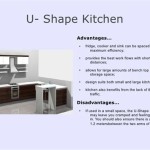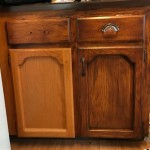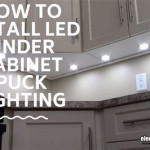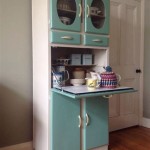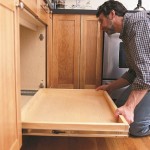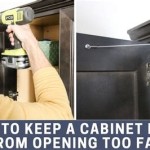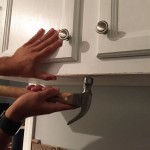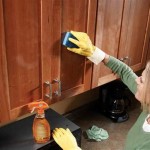Ways to Decorate Kitchen Cabinets
Kitchen cabinets are a prominent feature in any kitchen. They provide storage, define the space, and significantly contribute to the overall aesthetic. Rather than merely providing functionality, cabinets can be transformed into decorative elements that reflect personal style and enhance the kitchen's visual appeal. There exist numerous approaches to decorating kitchen cabinets, ranging from simple hardware updates to more involved painting and restructuring projects. Each method offers different levels of impact and allows for a tailored approach to kitchen design.
The key to successful cabinet decoration lies in considering the existing kitchen design, the desired aesthetic, and the budget available. A cohesive design scheme is crucial, ensuring that the cabinet decorations complement the countertops, backsplash, flooring, and appliances. This article will explore various methods of decorating kitchen cabinets, providing detailed information and practical advice to guide homeowners in their renovation endeavors.
Updating Cabinet Hardware
One of the simplest and most impactful ways to decorate kitchen cabinets is by updating the hardware. Cabinet hardware, including knobs, pulls, and hinges, can drastically change the look and feel of the cabinets without requiring extensive renovations. This is a cost-effective option for homeowners seeking a quick and easy update.
The selection of cabinet hardware is vast, encompassing a wide range of styles, materials, and finishes. Popular styles include classic knobs, sleek modern pulls, and rustic handles. Materials range from traditional metals like brass, bronze, and stainless steel to more contemporary options like glass, ceramic, and wood. The finish of the hardware should complement the cabinet color and the overall kitchen design. For example, brushed nickel hardware pairs well with gray or white cabinets, while oil-rubbed bronze hardware can enhance the warmth of wood cabinets.
Installation is typically straightforward, requiring basic tools such as a screwdriver and a drill. When replacing existing hardware, it is important to measure the spacing between the screw holes to ensure a proper fit. Consider using a template to accurately align the new hardware. Prior to beginning installation, it is recommended to create a test space, somewhere hidden, to fully understand the process, or alternatively, seek the services of a professional.
Beyond aesthetics, cabinet hardware can also improve functionality. Ergonomic pulls can be easier to grip than small knobs, especially for individuals with arthritis or limited hand strength. Soft-closing hinges can prevent cabinets from slamming shut, reducing noise and wear and tear.
The cost of cabinet hardware can vary depending on the style, material, and brand. Budget-friendly options are available at most home improvement stores, while high-end designer hardware can be sourced from specialty retailers. It’s important to balance aesthetic preferences with cost considerations.
Repainting or Refinishing Cabinets
Repainting or refinishing kitchen cabinets offers a more substantial transformation, allowing for a complete change in color and appearance. This option is ideal for homeowners who are unhappy with the existing cabinet color or want to refresh cabinets that have become worn or outdated. This option is more involved than merely changing hardware but still represents a more cost-effective solution than full cabinet replacement.
Preparation is key to a successful repainting or refinishing project. This involves removing all hardware, cleaning the cabinets thoroughly with a degreasing agent, and sanding the surfaces to create a smooth and paint-ready surface. Priming is essential for ensuring proper paint adhesion and preventing stains from bleeding through. Fill any imperfections, such as dents or scratches, with wood filler and sand smooth.
The choice of paint is crucial. Oil-based paints offer durability and a smooth finish but require more time to dry and emit strong odors. Latex-based paints are easier to clean up and have lower VOC emissions but may not be as durable as oil-based paints. Cabinet-specific paints, designed to withstand the rigors of kitchen use, are also available. Regardless of the paint type, it is recommended to apply multiple thin coats rather than one thick coat to achieve optimal coverage and a professional-looking finish.
For refinishing cabinets, which involves stripping away the existing finish and applying a new stain or varnish, the process is similar but requires more specialized tools and techniques. Stripping the old finish can be accomplished using chemical strippers or sanding. Once the old finish is removed, the wood can be stained to the desired color and then sealed with a clear coat of varnish or polyurethane for protection.
Consider consulting with a professional painter or contractor if unsure about tackling the repainting or refinishing project independently. They can provide expert advice on paint selection, preparation techniques, and application methods, ensuring a high-quality and long-lasting finish.
The cost of repainting or refinishing cabinets depends on the size of the kitchen, the condition of the cabinets, and whether the project is completed independently or by a professional. Obtaining multiple quotes from contractors and comparing prices is advisable.
Adding Decorative Elements
Beyond hardware updates and paint, various decorative elements can be added to kitchen cabinets to enhance their visual appeal. These elements can include decorative molding, glass inserts, open shelving, and under-cabinet lighting. These additions allow for personalization and customization, creating a unique and stylish kitchen space.
Decorative molding can be applied to cabinet doors and frames to add architectural detail and visual interest. Crown molding, beadboard, and raised panel molding are popular choices. Molding can be painted or stained to match the cabinets or create a contrasting accent. The addition of decorative molding requires careful measuring and cutting to ensure a seamless fit.
Glass inserts can replace the solid panels of cabinet doors, allowing for a glimpse of the items stored inside. This can be a particularly effective way to showcase decorative dishes, glassware, or collections. Glass inserts can be clear, frosted, etched, or stained, depending on the desired level of transparency. Installing glass inserts requires removing the existing panels, cutting the door frames to accommodate the glass, and securing the glass with glazing points or silicone sealant.
Open shelving can be incorporated into the cabinet design to create a display area for cookbooks, plants, or decorative objects. Open shelves can be made from wood, metal, or glass and can be mounted to the cabinet frame or directly to the wall. Open shelving adds visual interest and provides easy access to frequently used items. Consider the styling on the shelves, and ensure items are organized and fit into the aesthetic to avoid clutter.
Under-cabinet lighting can illuminate the countertop and create a warm and inviting ambiance. LED strip lights, puck lights, and linear lights are commonly used for under-cabinet lighting. These lights can be hardwired or battery-operated and can be installed with adhesive strips or screws. Proper lighting ensures functionality, and highlights the countertops and backsplash.
The cost of adding decorative elements to kitchen cabinets varies depending on the type of element, the materials used, and whether the installation is completed independently or by a professional. Consider the cost of materials, tools, and labor when budgeting for this type of project.
Another decorative element involves utilizing contact paper or peel-and-stick wallpaper to interior shelving. The use of a patterned or textured material provides a visual pop when the cabinet doors are opened, adding a layer of unexpected design and interest. This is an especially cost-effective method, and removable, allowing modifications as tastes change.
Implementing trim accents is a subtle method. Installing decorative corbels, valances, or decorative feet adds a touch of elegance and sophistication. Corbels can be placed under upper cabinets or on the sides of islands, while valances can be added above sinks or windows. Decorative feet can be used to elevate lower cabinets, giving them a more furniture-like appearance.
Fabric or wallpaper inserts within paneled doors transform the appearance of standard inserts. Removing the existing inserts and replacing them with fabric or wallpaper creates a unique design feature that can be coordinated with the kitchen's color scheme and style. It can also be more easily changed than painted doors.
Stencils or hand-painted designs enable customization with patterns, motifs, or personalized artwork directly onto the cabinet doors or sides. This is an opportunity to add creative and individual touches, reflecting personal style. This requires patience, skill, and the use of appropriate paints and sealers, but the results are incredibly personalized.
Adding a pop of color to the cabinet interiors is unexpected. Painting the inside of the cabinets a contrasting color can create a surprising and delightful effect when the doors are opened. This works particularly well with glass-front cabinets or open shelving.
Employing strategically placed lighting under cabinets, inside drawers or on top of cabinets, enhances both function and aesthetic appeal. Consider adding lights to interior cabinets. This is both a practical and aesthetically enhancing addition. Lighting adds depth, creates a warm ambience, and highlights the organization and contents of the cabinets.
These varied methods for decorating kitchen cabinets make it possible to achieve a wide range of looks, from subtle enhancements to dramatic transformations. Whether homeowners opt for simple hardware updates, refreshing paint jobs, or the addition of decorative elements, the key is to consider the existing kitchen design, the desired aesthetic, and available budget. By carefully planning and executing the decoration process, it is possible to create a kitchen space that is both functional and visually appealing.
:strip_icc()/101634871-9532042e1719420b859d6d4d4b732be3.jpg?strip=all)
16 Ideas For Decorating Above Kitchen Cabinets
:strip_icc()/101705919-46c69aadc4b1401fbb8383b607c37b36.jpg?strip=all)
16 Ideas For Decorating Above Kitchen Cabinets

30 Clever Ways To Decorating Kitchen Cabinet Storage Cabinets Decor Above

Decorate Above Kitchen Cabinets The Crazy Craft Lady

How To Decorate Above Kitchen Cabinets Modern Farmhouse

Top 15 Ideas For Above Kitchen Cabinets Hunker Decorating Decor

How To Decorate Above Kitchen Cabinets Modern Farmhouse

How To Style Glass Kitchen Cabinets Sanctuary Home Decor

How To Decorate Above Kitchen Cabinets O Hanlon Remodeling

How To Decorate Kitchen Shelves Beautifully Open Doors Hearts
Related Posts

